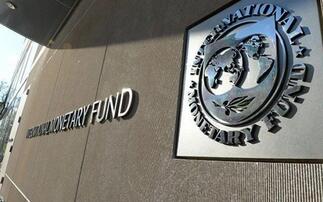Industry Voice: Fidelity's Dan Roberts examines the hidden risks in relying on 'adjusted earnings', arguing that they should not be taken at face value. Dan explains how management teams can sometimes use adjustments to flatter financial performance and how we manage this risk in the Fidelity Global Dividend Fund.
‘Profit is opinion, cash is fact' - Alfred Rappaport
Accounting adjustments are common around the world but used most aggressively in the US where 494 companies of the S&P 500 issue an adjusted earnings number alongside the standardised and audited ‘Generally Accepted Accounting Principals' (GAAP) number. These adjustments are made at the discretion of management and are not subject to audit.
There are many reasons why a company may choose to provide an adjusted earnings number. In theory, they are used to strip out the effects of ‘one-offs' - non-recurring items - with the intention of giving investors a clearer sense of ongoing profitability. However, the temptation is for company management to use these adjustments to flatter financial performance. Adjustments by many companies are no longer restricted to one-offs, and now often include items which can be considered an ongoing cost of doing business.
Chart 1 shows how the difference between GAAP and adjusted earnings tends to rise into a ‘late cycle' environment. This could be a sign of management reaching further to meet investor expectations as the headroom for profit growth starts to run out. Relying on adjusted earnings given by management in investor presentations can be risky. Today, adjusted earnings are in aggregate around 15% higher than GAAP earnings, meaning that a P/E of 16x on adjusted earnings becomes a P/E of 18.4x on audited GAAP earnings.
Source: S&P; DJI, Macquarie Research, January 2019.
Addressing this issue at the individual stock level is an important part of our investment process, and we can often find ourselves ‘adding back' cost items that management has removed from their adjusted earnings. The aim is to arrive at a fairer representation of profitability and cash generation, from which we can then make an assessment of value.
Two sectors in particular are guilty of overuse and misuse of such adjustments.
Large cap pharmaceuticals
Many of these large multinationals choose to acquire smaller biotech companies to access promising new products. If the acquired products subsequently fail in trials the pharma companies will write-off the cost of the acquisition and often strip out the effect of this write-off on the basis that it is a ‘non-cash' adjustment to goodwill. While it may be non-cash in the year that it is written off, the cash spent at the time of the acquisition was very real. If we're going to give companies credit for the growth that such acquisitions can generate over the longer-term then we also need to make an allowance for the cost of this growth when thinking about an appropriate valuation.
Technology
The most common adjustment we see in the world of tech is to remove the cost of 'share based compensation' from reported earnings. Many technology companies use share options/grants as a major part of their employee compensation packages so the effects can be significant. In the case of Twitter, for example, removing the cost of share options turns a GAAP loss of $0.15 per share into a profit of $0.45 per share. Again, the rationale is that this is a ‘non-cash' expense - but the issue of free or heavily discounted shares to employees dilutes the ownership of external shareholders. This needs to be considered when considering the worth of the company equity.
The widening spread between audited GAAP and adjusted numbers reminds us that earnings are a subjective measure of financial performance and can sometimes paint a misleading picture of company profitability. For this reason, as income investors, we prefer cash-based measures of value - so we make sure we recognise any ‘hidden' cash costs in our analysis. After all, it is cash, not earnings, that pays the dividend.
Further information
Fidelity Global Dividend Fund portfolio manager Dan Roberts balances conviction and diversification through a portfolio of around 50 high quality companies that he believes possess the strength and resilience to sustainably grow their dividends across a range of economic scenarios. You can learn more about the fund and Dan's latest insight from the links below.
Profile - Fidelity Global Dividend Fund
Factsheet - Fidelity Global Dividend Fund - W Acc
Article - A quality approach pays dividends
___________
Important information
This information is for investment professionals only and should not be relied upon by private investors. The value of investments and any income from them can go down as well as up so the client may get back less than they invest. Past performance is not a reliable indicator of future returns. As a result of the annual management charge for the income share class being taken from capital, the distributable income may be higher but the fund's capital value may be eroded, which will affect future performance. The Fidelity Global Dividend Fund can use financial derivative instruments for investment purposes, which may expose it to a higher degree of risk and can cause investments to experience larger than average price fluctuations. Changes in currency exchange rates may affect the value of an investment in overseas markets. This fund invests in emerging markets which can be more volatile than other more developed markets. Investments should be made on the basis of the current prospectus, which is available along with the Key Investor Information Document and current and semi-annual reports, free of charge on request, by calling 0800 368 1732. Issued by Financial Administration Services Limited and FIL Pensions Management, authorised and regulated by the Financial Conduct Authority. Fidelity, Fidelity International, the Fidelity International logo and F symbol are trademarks of FIL Limited. EQINC316-0619













